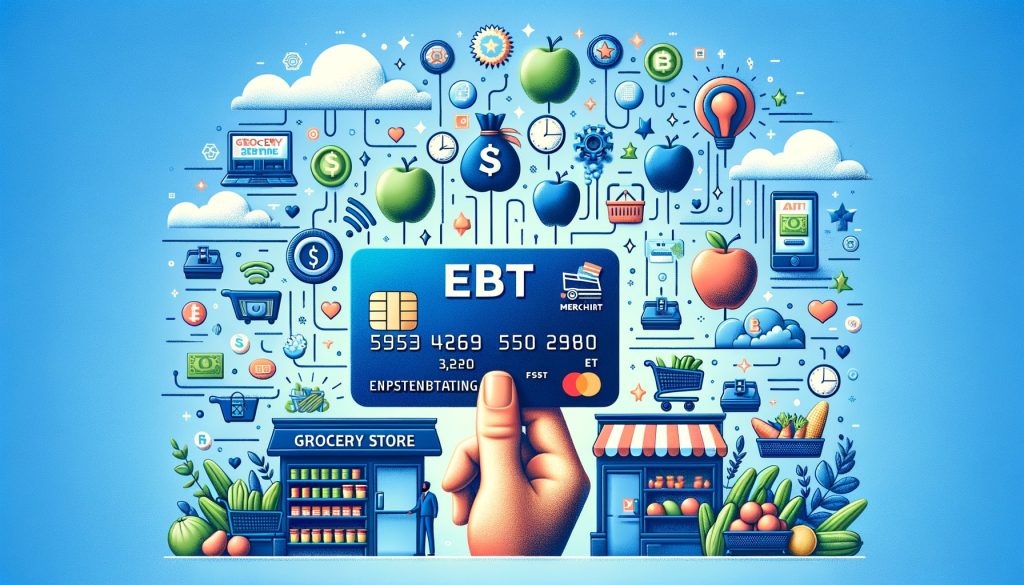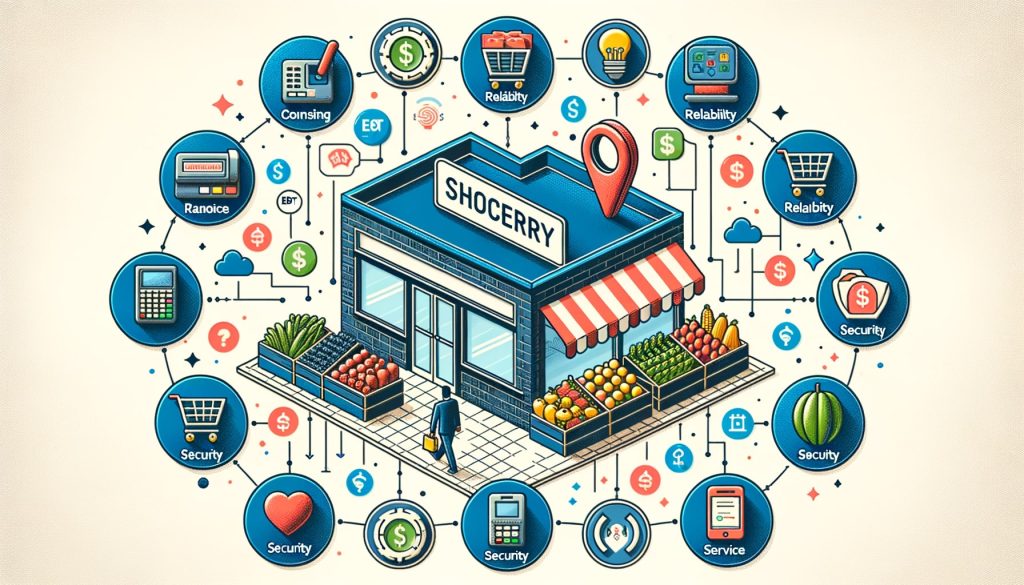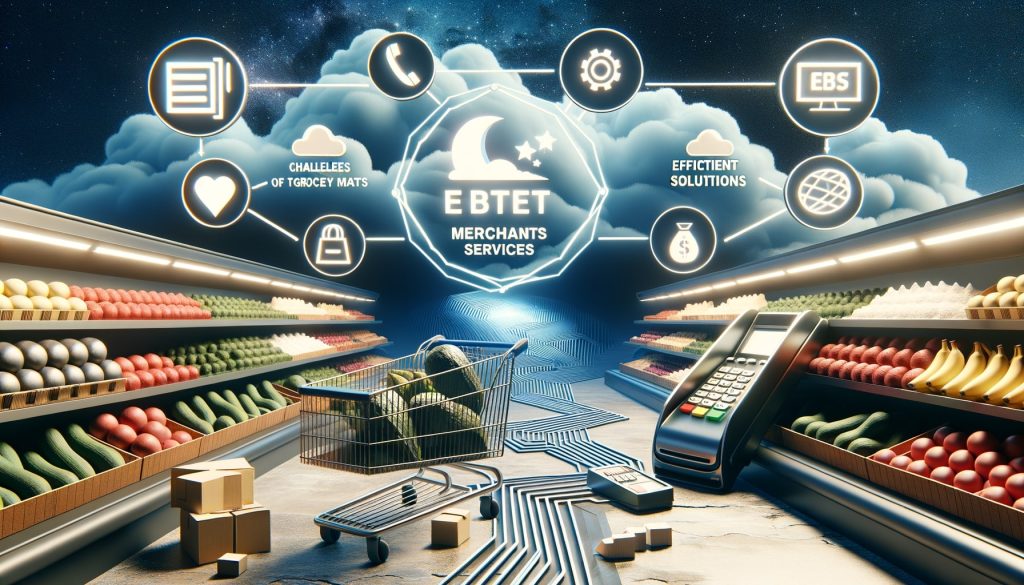
By Ethan Brooks November 25, 2024
In today’s modern world, electronic payment methods have become an integral part of our daily lives. From credit cards to mobile wallets, consumers now have a wide range of options when it comes to making purchases.
However, for individuals and families who rely on government assistance programs such as the Supplemental Nutrition Assistance Program (SNAP), traditional payment methods may not always be accessible. This is where Electronic Benefit Transfer (EBT) merchant services come into play, providing a vital lifeline for grocery stores and their customers.
EBT merchant services enable grocery stores to accept payments from customers using their government-issued EBT cards. These cards function similarly to debit cards, allowing individuals to access their benefits and purchase eligible food items.
By accepting EBT payments, grocery stores can cater to a larger customer base, including low-income individuals and families who heavily rely on government assistance for their daily sustenance.
What are EBT Merchant Services and How Do They Work?
EBT merchant services are specialized payment processing solutions that enable grocery stores to accept EBT payments. These services involve the integration of EBT processing equipment and software into the store’s existing point-of-sale (POS) system. When a customer wishes to make a purchase using their EBT card, the cashier swipes or inserts the card into the EBT terminal, and the transaction is processed in real-time.
The EBT terminal communicates with the state’s EBT system to verify the customer’s eligibility and available balance. Once the transaction is approved, the customer’s benefits are deducted, and the grocery store receives payment for the purchase. It is important to note that EBT cards can only be used to purchase eligible food items, such as fruits, vegetables, dairy products, and meats, ensuring that the funds are used for their intended purpose.
Benefits of EBT Merchant Services for Grocery Stores

- Expanding Customer Base: By accepting EBT payments, grocery stores can attract and serve a larger customer base, including individuals and families who rely on government assistance programs. This not only helps the store increase its revenue but also fulfills its social responsibility by providing access to nutritious food for all.
- Streamlined Payment Process: EBT merchant services simplify the payment process for both customers and store employees. With a dedicated EBT terminal integrated into the POS system, cashiers can quickly process EBT transactions, reducing checkout times and improving overall customer satisfaction.
- Increased Sales and Revenue: Accepting EBT payments can lead to a significant increase in sales and revenue for grocery stores. According to a study conducted by the United States Department of Agriculture (USDA), SNAP participants spent over $70 billion on eligible food items in 2019. By tapping into this market, grocery stores can tap into a lucrative customer segment and boost their bottom line.
- Enhanced Efficiency and Accuracy: EBT merchant services automate the payment process, eliminating the need for manual calculations and reducing the chances of human error. This ensures that customers are charged accurately, and the store receives the correct payment for each transaction.
- Compliance with Government Regulations: By implementing EBT merchant services, grocery stores can ensure compliance with government regulations regarding the acceptance and processing of EBT payments. This helps them avoid penalties and legal issues while maintaining the integrity of the SNAP program.
How to Choose the Right EBT Merchant Service Provider for Your Grocery Store

Choosing the right EBT merchant service provider is crucial for the smooth operation of your grocery store. Here are some factors to consider when selecting a provider:
- Compatibility with Existing Systems: Ensure that the EBT merchant service provider’s equipment and software are compatible with your store’s existing POS system. This will minimize disruptions and make the integration process seamless.
- Reliability and Uptime: Look for a provider that offers reliable and secure EBT processing services. Downtime can result in lost sales and inconvenience for both customers and store employees.
- Customer Support: Evaluate the level of customer support provided by the EBT merchant service provider. Prompt and knowledgeable support can help resolve any issues or concerns quickly, minimizing disruptions to your business.
- Pricing and Fees: Compare the pricing and fees charged by different EBT merchant service providers. Look for transparent pricing structures and avoid providers with hidden fees or excessive charges.
- Security and Compliance: Ensure that the EBT merchant service provider adheres to industry-standard security protocols and complies with all relevant regulations. This will help protect your customers’ sensitive information and ensure the integrity of the EBT payment process.
Implementing EBT Merchant Services: Step-by-Step Guide for Grocery Store Owners

Implementing EBT merchant services in your grocery store involves several steps. Here is a step-by-step guide to help you navigate the process:
- Research and Select a Provider: Conduct thorough research to identify reputable EBT merchant service providers. Consider factors such as compatibility, reliability, customer support, pricing, and security before making a decision.
- Contact the Provider: Reach out to the selected EBT merchant service provider and express your interest in their services. Request detailed information about their offerings, including equipment, software, and support.
- Assess Integration Requirements: Work with the provider to assess the integration requirements for your store’s POS system. Determine if any hardware or software upgrades are necessary and plan accordingly.
- Obtain Necessary Equipment: If required, purchase or lease the necessary EBT processing equipment from the provider. Ensure that the equipment meets all technical specifications and is compatible with your existing systems.
- Install and Configure Equipment: Install the EBT processing equipment as per the provider’s instructions. Configure the equipment to integrate seamlessly with your POS system, ensuring smooth transaction processing.
- Train Store Employees: Provide comprehensive training to your store employees on how to use the EBT processing equipment and software. Familiarize them with the EBT payment process and address any questions or concerns they may have.
- Test and Validate: Conduct thorough testing of the EBT processing system to ensure its functionality and accuracy. Verify that transactions are processed correctly, and the store receives payment for each transaction.
- Promote EBT Acceptance: Once the EBT merchant services are fully implemented, promote the acceptance of EBT payments in your store. Display signage and inform customers about the availability of this payment option to maximize its usage.
Common Challenges and Solutions in Using EBT Merchant Services for Grocery Stores

While EBT merchant services offer numerous benefits, there can be challenges associated with their implementation and usage. Here are some common challenges and their solutions:
- Technical Issues: Technical glitches or equipment malfunctions can disrupt the EBT payment process. To mitigate this, ensure that you have a reliable EBT merchant service provider that offers prompt technical support and maintenance services.
- Training and Familiarity: Store employees may require training and time to become familiar with the EBT processing equipment and software. Provide comprehensive training and ongoing support to address any issues or questions that may arise.
- Connectivity and Downtime: Poor internet connectivity or system downtime can hinder the processing of EBT transactions. Consider implementing backup internet connections or redundant systems to minimize disruptions.
- Compliance and Reporting: EBT merchant services require strict compliance with government regulations and reporting requirements. Stay updated with the latest guidelines and ensure that your store’s processes and systems adhere to them.
- Fraud Prevention: EBT cards are susceptible to fraud, and grocery stores must take measures to prevent unauthorized usage. Implement security measures such as PIN verification and transaction monitoring to minimize the risk of fraud.
Ensuring Compliance and Security with EBT Merchant Services in Grocery Stores
Compliance and security are paramount when it comes to EBT merchant services in grocery stores. Here are some measures to ensure compliance and enhance security:
- Secure Network Infrastructure: Implement robust network security measures to protect customer data and prevent unauthorized access. This includes firewalls, encryption, and regular security audits.
- PCI DSS Compliance: Ensure that your store’s payment processing systems comply with the Payment Card Industry Data Security Standard (PCI DSS). This standard outlines security requirements for handling cardholder data and helps prevent data breaches.
- Employee Training: Train your employees on the importance of data security and compliance. Educate them about best practices for handling EBT transactions and sensitive customer information.
- Regular Audits and Assessments: Conduct regular audits and assessments of your store’s EBT processing systems to identify any vulnerabilities or non-compliance issues. Address any findings promptly to maintain a secure and compliant environment.
- Fraud Detection and Prevention: Implement fraud detection and prevention measures to safeguard against unauthorized usage of EBT cards. This can include transaction monitoring, PIN verification, and real-time fraud alerts.
Frequently Asked Questions (FAQs)
Q1. What is an EBT merchant service?
An EBT merchant service is a specialized payment processing solution that enables grocery stores to accept payments from customers using their government-issued EBT cards. It involves the integration of EBT processing equipment and software into the store’s existing POS system.
Q2. Can EBT cards be used to purchase non-food items?
No, EBT cards can only be used to purchase eligible food items. Non-food items such as alcohol, tobacco, and household supplies are not eligible for purchase using EBT benefits.
Q3. How long does it take for an EBT transaction to be processed?
EBT transactions are processed in real-time, similar to debit card transactions. The transaction is verified and approved within seconds, allowing the customer to complete their purchase promptly.
Q4. Can grocery stores refuse to accept EBT payments?
No, grocery stores that are authorized to accept SNAP benefits are required to accept EBT payments. Refusing to accept EBT payments can result in penalties and legal consequences.
Q5. Can EBT merchant services be used for online grocery purchases?
Yes, some EBT merchant service providers offer solutions for online grocery purchases. These solutions typically involve a separate online platform or integration with existing e-commerce systems.
Conclusion
EBT merchant services play a crucial role in ensuring access to nutritious food for individuals and families who rely on government assistance programs. By accepting EBT payments, grocery stores can expand their customer base, increase sales and revenue, and streamline the payment process.
However, implementing and using EBT merchant services come with their own set of challenges, including technical issues, compliance requirements, and security concerns. By choosing the right EBT merchant service provider, following best practices, and staying updated with regulations, grocery store owners can successfully leverage EBT merchant services to benefit their business and the community they serve.